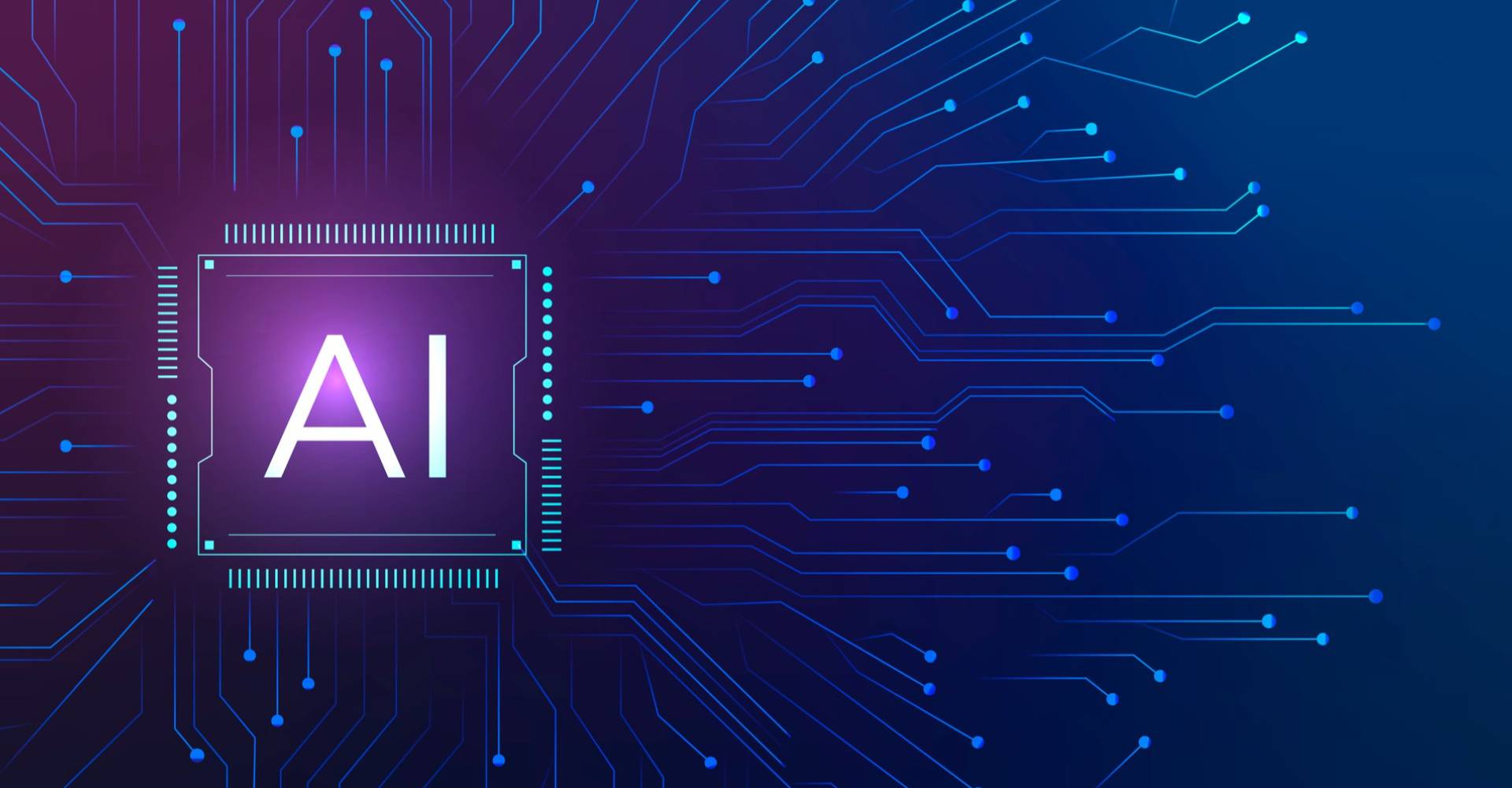AI and Data Science in the 4IR
We are currently experiencing the Fourth Industrial Revolution (4IR). It is the era where Google completes your sentences in the search results, Netflix recommends films based on the ones you previously watched, and Spotify automatically curates playlists that match your vibe. Welcome to AI-powered data science!
Data science and Artificial Intelligence are two of the most dynamic and fast-growing fields. Understanding how they complement each other can unlock a plethora of possibilities and drive smarter decisions in everything from business to healthcare. However, before we dive into the details of the impact of this dynamic duo, let us first comprehend the basics of these fields individually.
IBM defines artificial intelligence as “technology that enables computers and machines to stimulate human learning, comprehension, problem-solving, decision making, creativity and autonomy” (IBM). Simply, just as humans learn from experiences, AI learns from the continued information that it is exposed to. Data Science on the other hand, is the process of collecting, analyzing and interpreting large amounts of data to find useful information. It is used in a multitude of areas, from predicting the weather to suggesting the next song on your playlist.
By merging the two fields, artificial intelligence seems to have revolutionized the field of data science. While data science helps us understand information, AI helps us act on that understanding more efficiently. It has become a crucial integrative part of evolving digital ecosystems.
Bridging The Gap
This section will explore how the integration of AI has enhanced data science. One of the primary ways AI contributes to data science is through automation of repetitive tasks. AI- powered algorithms can automatically sift through and organize data, which is more often than not a taxing and monotonous task. This saves time and allows data scientists to focus more on analyzing and generating new insights.
AI also enhances data science by learning from the data fed to it and delivers better predictions. Traditional data analysis methods are limited in their capacity to identify complex patterns and relationships within data. AI-powered algorithms manage to process
large datasets and uncover hidden patterns that may be too intricate for humans to spot immediately.
Another prominent result of bridging the gap between AI and data science is in terms of speed and scale. AI dramatically accelerates data analysis allowing it to handle vast amounts of data in a fraction of the time it would take a human or conventional software to do so. Additionally, it scales these massive datasets without compromising on the accuracy.
Key AI Techniques Used in Data Science
Machine Learning or ML is one of the cornerstones of artificial intelligence in data science. This involves training computers to learn data and make predictions or decisions subsequently without being explicitly programmed. The computer fulfils these tasks through two basic approaches: supervised learning and unsupervised learning. In supervised learning, the machine learns through labelled datasets, while it’s the opposite in unsupervised learning. For instance, an English-French language translation model can learn that “he is a teacher” is “il est professeur” in French. Now, with enough similar examples, the machine learning algorithm can predict that “he is a singer” will be likely to begin with “il est”.
Have you ever asked Alexa to sing a song? Or Siri to add an item to your grocery list? If you have had an interaction with any of your virtual assistants, you can owe it all to Natural Language Processing (NLP). This AI technique “allows machines to comprehend,
interpret and generate human language” (simplilearn). This approach is the driving force behind various technological advancements- personal virtual assistants being one of them. Furthermore, when you are typing on your smartphone, the word suggestions (and that includes spelling corrections for your typos too!) that pop up as you type, are all a result of Natural Language Processing. It is also useful for analyzing customer feedback, reviews, and social media posts.
The third AI technique that we will be exploring is Computer Vision. This enables machines to interpret and analyze visual data from the world, such as images and videos, just like humans. Today, computer vision is empowered by Deep Learning, which uses Convolutional Neural Networks (CNNs) to find patterns in data. These networks are especially effective at processing visual information. For example, Google Photos can learn the difference between your pet dog and cat and automatically classify them under different albums.
The method of Computer vision has also given an impetus to development in the healthcare and automotive industries. It can help diagnose diseases from medical images
like X-Rays and MRIs. As another example, this technique has also enabled self-driving cars to identify pedestrians and other vehicles on the road.
Industry Specific Applications of AI in Data Science
Healthcare: The Institute for Healthcare Improvement (IHI) proposed four dimensions of the healthcare sector called ‘The Quadruple Aim’ for healthcare. This initiative looks at the following aspects of the healthcare system.
- Improve population health
- Improve the patient’s experience of care
- Reduce the rising cost of care
- Enhance caregiver experience
AI in data science can identify health trends and predict disease outbreaks by analyzing large datasets. This facilitates the public health team to take prompt actions and focus on prevention. It can also analyze patient data to recommend personalized treatments to suit the individual’s needs.
Additionally, it can result in lower healthcare costs by automating administrative tasks like scheduling appointments, billing, and insurance claim processing. The fourth, newly
added aim is concerned with enhancing the caregiver’s experience. AI tools assist doctors and nurses with paperwork and administration which significantly reduces stress and burnout.
To exemplify the use of AI for healthcare, let us look at the National Health Service’s (NHS) approach towards increasing awareness about the flu and COVID-19 vaccines. The ‘NHS Winter Vaccines Virtual Helper’ was a chatbot that not only provided vaccine education to the masses, but also at a further stage encouraged those eligible to schedule a vaccination appointment.
Finance: AI is transforming the ways in which financial organizations detect anomalies. Machine Learning has enabled analysis of large datasets to spot fraudulent transactions and financial crimes in real time. It also evaluates market trends and other data insights to make precise predictions. Robo-advisors offer personalized investment strategies based on individual risk profiles. Meanwhile, chatbots and virtual assistants continue to enhance the customer service experience.
Retail: The retail sector uses AI to enrich the customer experience by tracking customer behaviour. This could be through their browsing history or purchasing history.
Understanding customer behaviour helps in creating targeted marketing campaigns. Many shopping apps now offer a visual search option where you can upload or take a photo of an object to find similar products online. For instance, you can snap a picture of a bag and see matching items on Amazon. Further, retail platforms also use AI chatbots to improve customer service by providing quick responses to inquiries.
Transportation: The field of transportation is evolving with the integration of AI. It uses data from traffic cameras, sensors, and GPS to analyze traffic flow in real time. This also allows AI algorithms to predict congestion and suggest alternative routes.
AI and data science also make up a major part of popular ride-sharing services like Ola and Uber. The algorithm matches available drivers with passengers efficiently. It also optimizes pricing and routes. Furthermore, it has empowered self-driving cars, helping them recognize traffic signs.
Scope of AI in Data Science for Students
Artificial Intelligence in Data Science is revolutionary. Being an emerging field, it is high in demand and offers significant opportunities abroad. It has generated lucrative career paths in various industries like healthcare, finance, technology etc.
Countries like the US, Germany, and Australia are known to house some of the best AI and Data Science Programs. Harvard University, Stanford University, Massachusetts Institute of Technology (MIT) in America offer a Masters in AI and Data Science. The University of Stuttgart in Germany has a Master of Science Program in AI and Data Science. Australia’s University of Sydney offers a post graduate specialization in data science and AI.
AI in data science presents vast opportunities for innovation and career growth. Students skilled in AI will certainly play a key role in shaping the future of technology.
Wrapping Up
This synergy between artificial intelligence and data science is not a mere trend. It is on the fast track of becoming the backbone of next-gen business models. Change is here, and adapting to it is the key to staying ahead.








